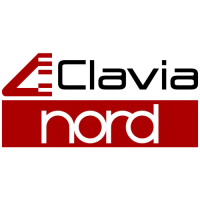8 Additional information
BU 0505 EN-3021 193
Pos: 501.1 /Anleitung en/Elektronik/F U und Starter/8. /9. Zusatzinformationen [BU 0 500 / BU 0200]/EMV/Elektr omagnetische Verträ glichkeit (EMV)_( Überschrift) @ 0\mod_1328 187595765_388.doc x @ 14236 @ 2 @ 1
8.3 Electromagnetic compatibility (EMC)
Pos: 501.2 /Anleitung en/Elektronik/F U und Starter/8. Zusatzi nformationen [BU 0500 / BU 0200]/EMV/Elektromagn etische Verträgli chkeit (EMV)_Ein leitungstext [SK 1xxE, SK 2 xxE, SK 5xxE, SK xxxE-FDS]] @ 0\mod_1325780630565_388.doc x @ 5431 @ @ 1
If the device is installed according to the recommendations in this manual, it meets all EMC directive
requirements, as per the EMC product standard EN 61800-3.
Pos: 501.3 /Anleitung en/Elektronik/F U und Starter/8. /9. Zusatzinformationen [BU 0500 / BU 0200]/EMV/_Allge meine Bestimmungen [a lle FU + Starter] @ 5\mod_139688 0662665_388.doc x @ 124646 @ 3 @ 1
8.3.1 General Provisions
As of July 2007, all electrical equipment which has an intrinsic, independent function and which is sold
as an individual unit for end users, must comply with Directive 2004/108/EEC (formerly Directive
EEC/89/336). There are three different ways for manufacturers to indicate compliance with this
directive:
1. EC Declaration of Conformity
This is a declaration from the manufacturer, stating that the requirements in the applicable
European standards for the electrical environment of the equipment have been met. Only those
standards which are published in the Official Journal of the European Community may be cited in
the manufacturer’s declaration.
2. Technical documentation
Technical documentation can be produced which describes the EMC characteristics of the device.
This documentation must be authorised by one of the “Responsible bodies” named by the
responsible European government. This makes it possible to use standards which are still in
preparation.
3. EC Type test certificate
This method only applies to radio transmitter equipment.
The devices only have an intrinsic function when they are connected to other equipment (e.g. to a
motor). The base units cannot therefore carry the CE mark that would confirm compliance with the
EMC directive. Precise details are therefore given below about the EMC behaviour of this product,
based on the proviso that it is installed according to the guidelines and instructions described in this
documentation.
The manufacturer can certify that his equipment meets the requirements of the EMC directive in the
relevant environment with regard to their EMC behaviour in power drives. The relevant limit values
correspond to the basic standards EN 61000-6-2 and EN 61000-6-4 for interference immunity and
interference emissions.
Pos: 501.4 /Anleitung en/Elektronik/F U und Starter/8. /9. Zusatzinformationen [BU 0500 / BU 0200]/EMV/Beurteil ung der EMV [Umrichter ] @ 5\mod_13968807 65461_388.doc x @ 124670 @ 3 @ 1
8.3.2 EMC evaluation
Two standards must be observed when evaluating electromagnetic compatibility.
1. EN 55011-1 (environmental standard)
The limits are defined in dependence on the basic environment in which the product is operated in
this standard. A distinction is made between 2 environments, whereby the 1st environment
describes the non-industrial living and business area without its own high-voltage or medium-
voltage distribution transformers. The 2nd environment, on the other hand, defines industrial
areas which are not connected to the public low-voltage network, but have their own high-voltage
or medium-voltage distribution transformers. The limits are subdivided into classes A1, A2 and B.
2. EN 61800-3 (product standard)
The limits are defined in dependence on the usage area of the product in this standard. The limits
are subdivided into categories C1, C2, C3 and C4, whereby class C4 basically only applies to
drive systems with higher voltage (≥ 1000 V AC), or higher currents (≥ 400 A). However, class C4
can also apply to the individual device if it is incorporated in complex systems.

